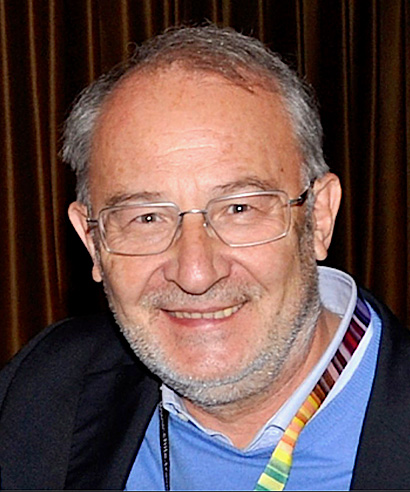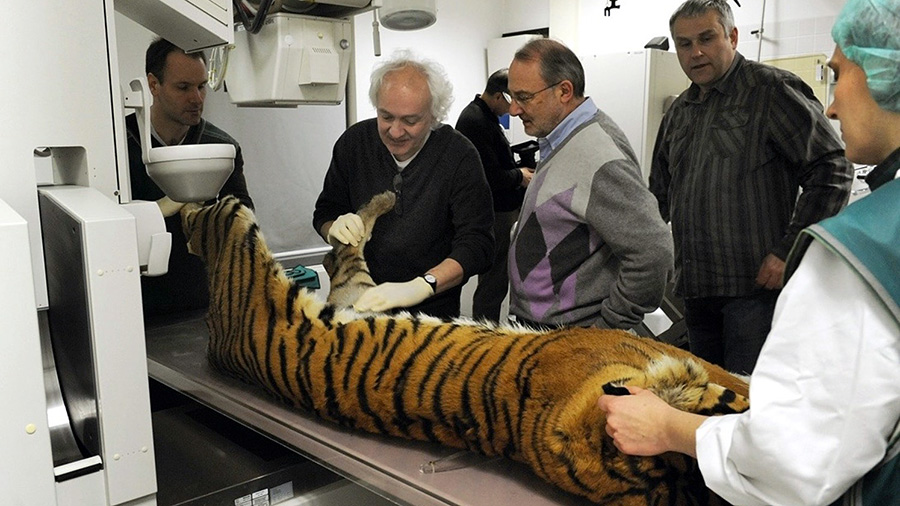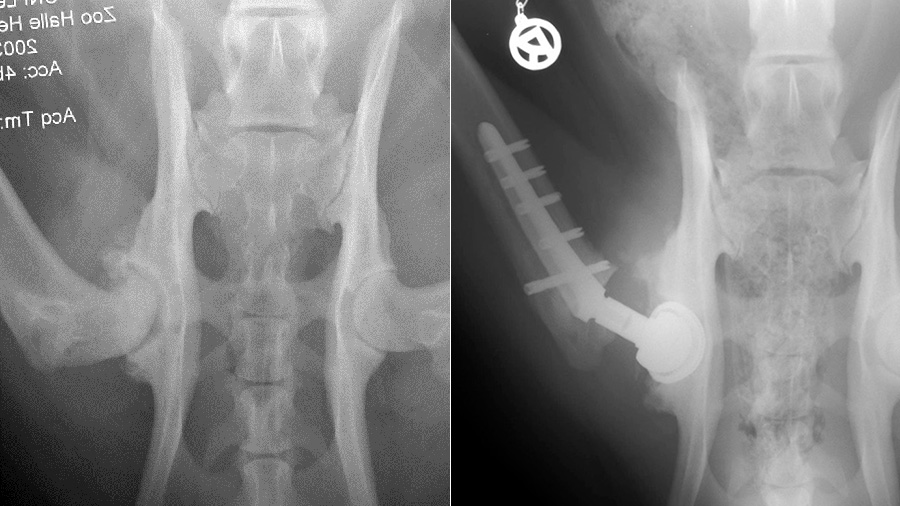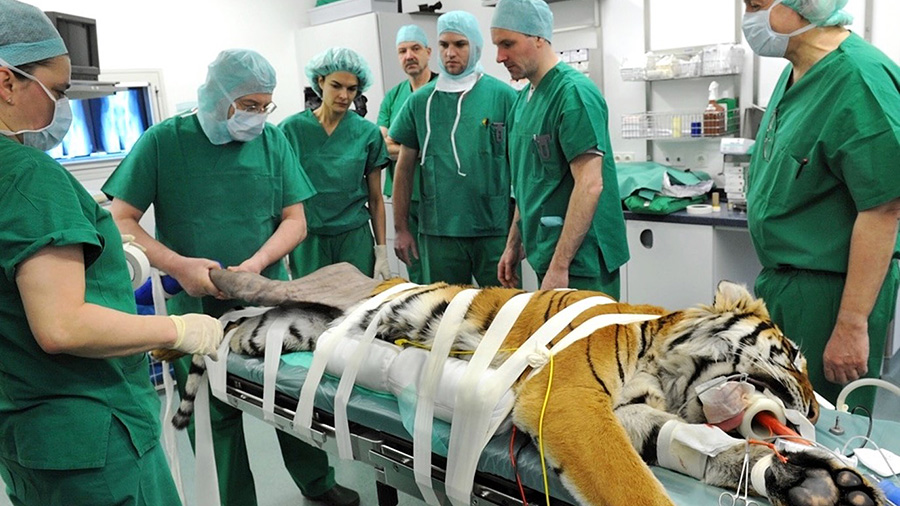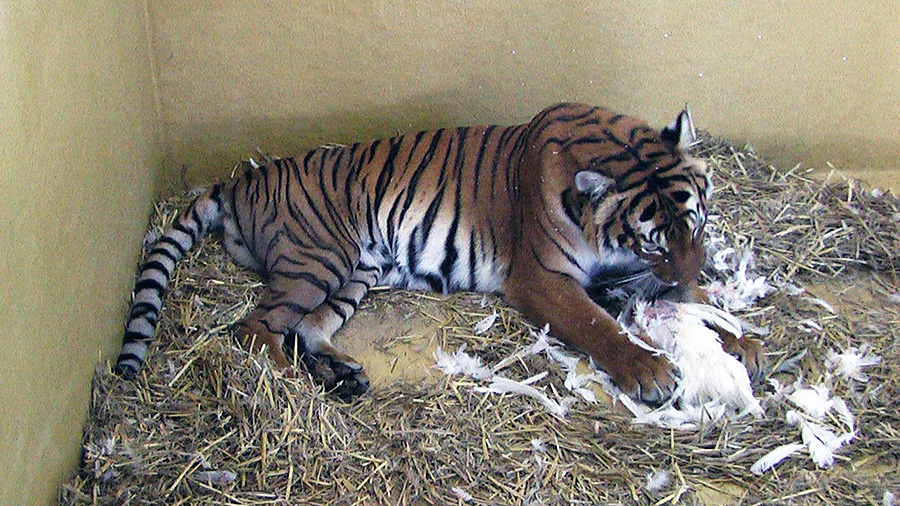It all started with Girl
WITH ALDO VEZZONI
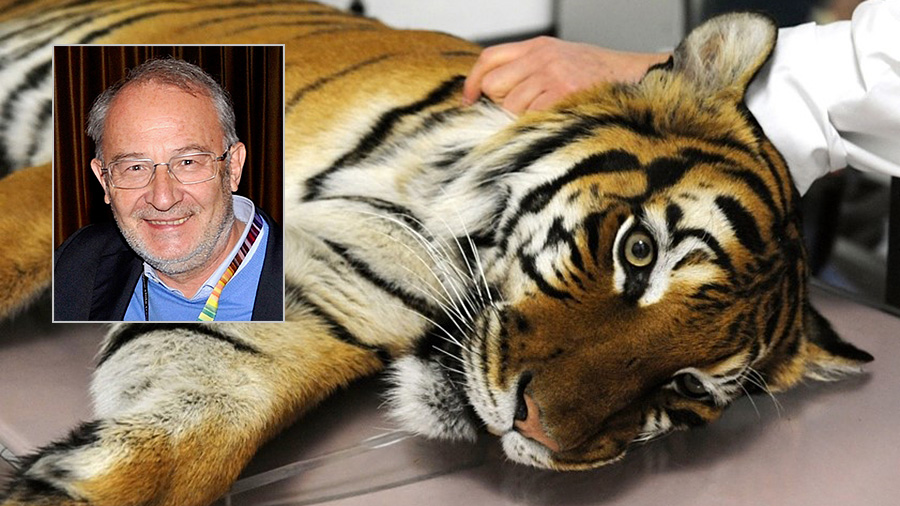
Not every story has a happy ending, but the world’s first cementless total hip replacement (THR) on a tiger ensured a better “in between” for the patient. Though that majestic and rare eight-year-old Malaysian tiger died during anesthesia prior to a subsequent surgery two years later, in 2013, the landmark cementless THR performed by AO VET’s Dr Aldo Vezzoni gave her a new lease on life and set the course for acceptance of THR in those amazing animals, too.
The Leipzig Zoo tiger named Girl—one of just 500 Malaysian tigers in existence in 2011 when the surgery took place—was clearly suffering: She had been experiencing right hip lameness for more than a year and was down to just 93 kg—from a normal weight of around 130 kg. Prof. Dr Peter Böttcher, associate professor at the University of Leipzig, evaluated her with X-rays and computed tomography (CT) scans and immediately called in the experts: a producer of a cementless hip prosthesis for dogs, and Cremona, Italy-based Dr Aldo Vezzoni, the most experienced surgeon in canine cementless hip prosthesis. The producer and Vezzoni collaborated to create a custom hip prosthesis to be implanted in Girl.
Diagnosed with arthritis and muscular hypertrophy, Girl likely would have been humanely euthanized without the intervention of the producer, Vezzoni and colleagues.
Can you do something?
“We were asked, ’Can you do something for her?’ And it was necessary to do something. Girl was in pain and always resting,” Vezzoni explained, adding that he had been successfully performing cementless surgical techniques since 1997 in over 1,000 cases because they are better tolerated by the bone and more straightforward to deal with in the event of complications.
The next challenge was finding the appropriate implants, he said.
“Human implants were too big because a human is a biped animal, with bigger hip joints,” said Vezzoni. He settled on a mix of custom-made implants designed for humans and also suitable for large dog breeds like Neopolitan Mastiffs, Caucasian Shepherds, Great Danes and Saint Bernards: 34, 36 and 38 mm prosthetic hip cups, a 12 mm stem, 5 mm diameter locking screws, a 26 mm aspherical head with aspherical diamond coating, and a dedicated jig and reamers.
The surgery took place January 23, 2011 at the University of Leipzig School of Veterinary Medicine and Girl could not have been in better hands: In the operating room with Vezzoni were Böttcher, anesthetist Prof. Michaele Alef, and assistants Dr Ilka Joop, Slobodan Tepic, Dr Hinnerk Werner and Leipzig Zoo veterinarian Dr Jens Thielebein.
‘Such a beautiful animal’
Once Girl was anesthetized, Vezzoni couldn’t help but marvel at her beauty.
“I was impressed to see such a beautiful animal up close,” he recalled, adding that caution is the watchword when anesthetizing tigers. “Anesthesia is very risk for these tigers because they are very sensitive to it; in fact, that is the reason Girl died a few years after another surgery.”
The cementless THR took about three hours—and Vezzoni took extra care to preserve the animal’s physical appearance when closing the incision.
“It was really touching to be in front of that big tiger. Joop closed the incision without a suture on the outside so that it was unnecessary to remove the stitches—and it didn’t affect her appearance,” Vezzoni said, adding that all members of the surgical team—including himself and the implant producer—cared for Girl out of compassion and without compensation.
appearance,” he added.
‘The AO drives innovation’
Since that groundbreaking surgery, much has changed, Vezzoni said. For example, veterinarians are seeing a huge increasing in hip osteoarthritis in dogs—Vezzoni himself has performed more than 2,700 THRs on canine patients to date—and implants and materials have improved so much that veterinarians can ensure excellent outcomes. Vezzoni has gone on to teach THR courses every year all over the world.
“I have been involved with AO VET forever. My first course was in 1978. I really apply the AO Principles in practice. The AO drives innovation: Today we are training veterinarians to correctly perform cementless THRs on dogs and cats with very rewarding outcomes,” he said.

